In celebration of June being Black Music Month, The Museum Of UnCut Funk is highlighting Black music and musicians featured in comic books.
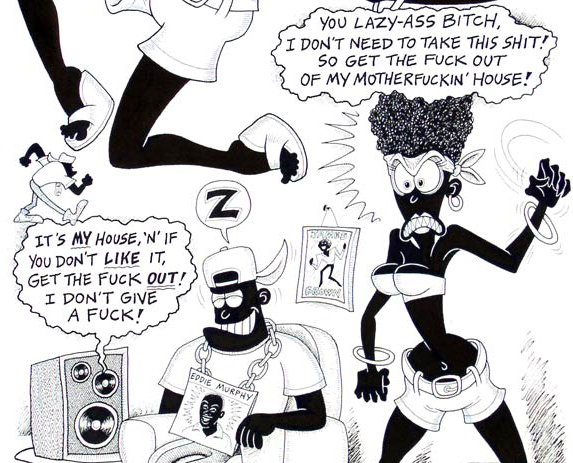
A number of the comic books listed below are favorites of the Curator and several are a part of The Museum Of UnCut Funk Collection.
Sgt. Fury and His Howling Commandos #36 – 1966
“My Brother, My Enemy Thomas”
G. Friedrich, Script, D Ayers, Penciller
Marvel Comics
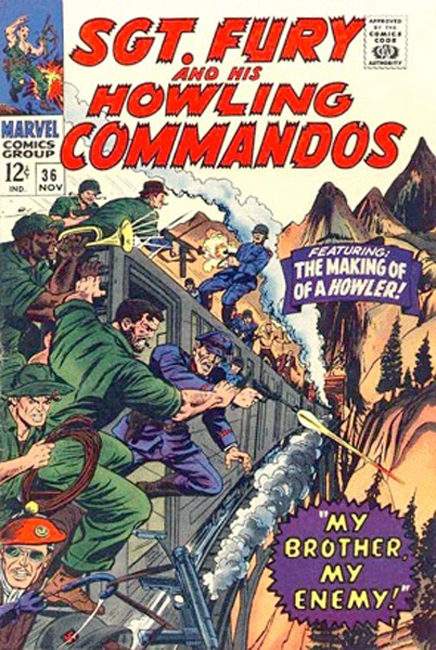 Sgt. Fury’s squad was integrated with one Black commando, Gabriel Jones. Jones was a trumpet/bugle player, named after the angel Gabriel from the bible. Gabriel used his instrument as his weapon of choice to create a distraction, inspire his comrades in the battle and to deflate the spirit of his enemies. Gabriel’s role as one of “Harlem’s greatest trumpet players” before the war was used as a theme in several “the Howlers on the home front” stories.
Sgt. Fury’s squad was integrated with one Black commando, Gabriel Jones. Jones was a trumpet/bugle player, named after the angel Gabriel from the bible. Gabriel used his instrument as his weapon of choice to create a distraction, inspire his comrades in the battle and to deflate the spirit of his enemies. Gabriel’s role as one of “Harlem’s greatest trumpet players” before the war was used as a theme in several “the Howlers on the home front” stories.
Sgt. Fury and His Howling Commandos #56 – 1967
“Gabriel, Blow Your Horn”
R. Thomas, Script, D. Ayers, Art
Marvel Comics
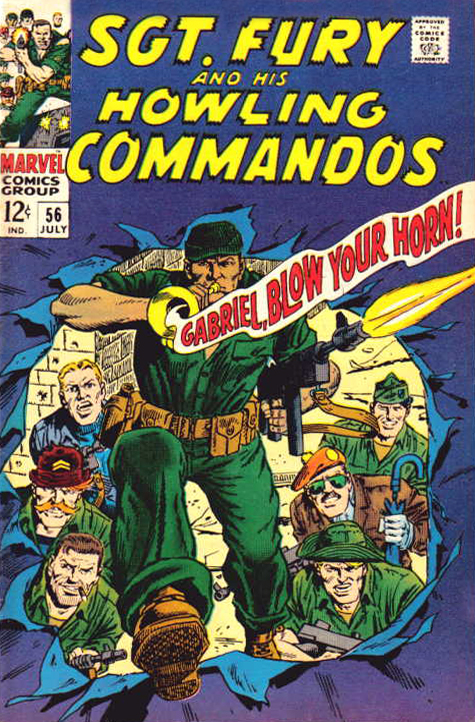
Justice League of America #95 – 1971
“The Private War of Johnny Dune!”
Friedrick, Writer, D. Dillin, Penciller
DC Comics
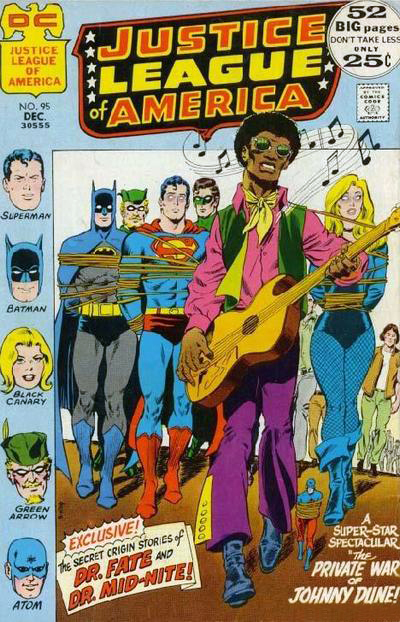 Johnny Dune, a Black soldier, who saw the killing fields of Vietnam realizes he had the mutant ability to control others with his voice. After the war he returned home and became a singer/guitarist, who went into politics. When he is crossed by a political mob boss, Dune uses his voice to turn his fans into a mob to attack the city. Classic!
Johnny Dune, a Black soldier, who saw the killing fields of Vietnam realizes he had the mutant ability to control others with his voice. After the war he returned home and became a singer/guitarist, who went into politics. When he is crossed by a political mob boss, Dune uses his voice to turn his fans into a mob to attack the city. Classic!
Peter Parker, The Spectacular Spiderman #24 – 1978
“Death of the Hypno-Hustler”
Mantlo, Author, F. Springler, Artist
Marvel Comics
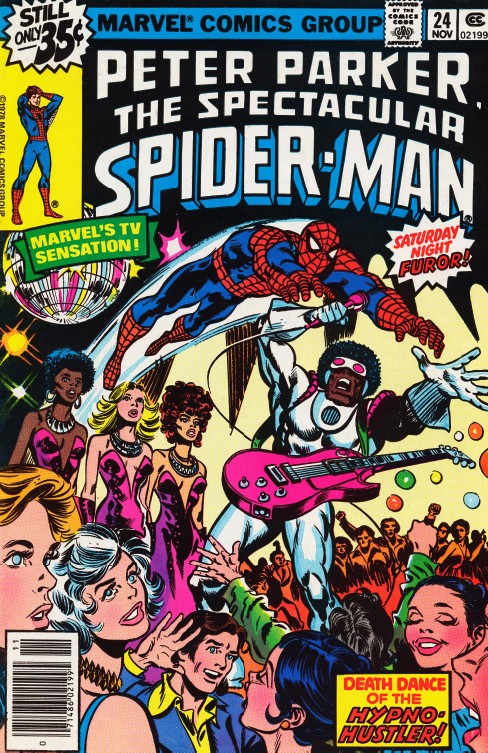 “My music got me off the streets” is the intro we get for this nameless Black musician. He is a crook with an amazing ability to mesmerize people when they hear his voice and his guitar. Ok, so Marvel copied off of DC Comics’ Johnny Dune. Spiderman defeats Dune by stuffing his ears with webbing and turning the villain’s weapon against him.
“My music got me off the streets” is the intro we get for this nameless Black musician. He is a crook with an amazing ability to mesmerize people when they hear his voice and his guitar. Ok, so Marvel copied off of DC Comics’ Johnny Dune. Spiderman defeats Dune by stuffing his ears with webbing and turning the villain’s weapon against him.
The Man from Harlem – 1978
Written And Illustrated By G. Crepax
Catalan Communications
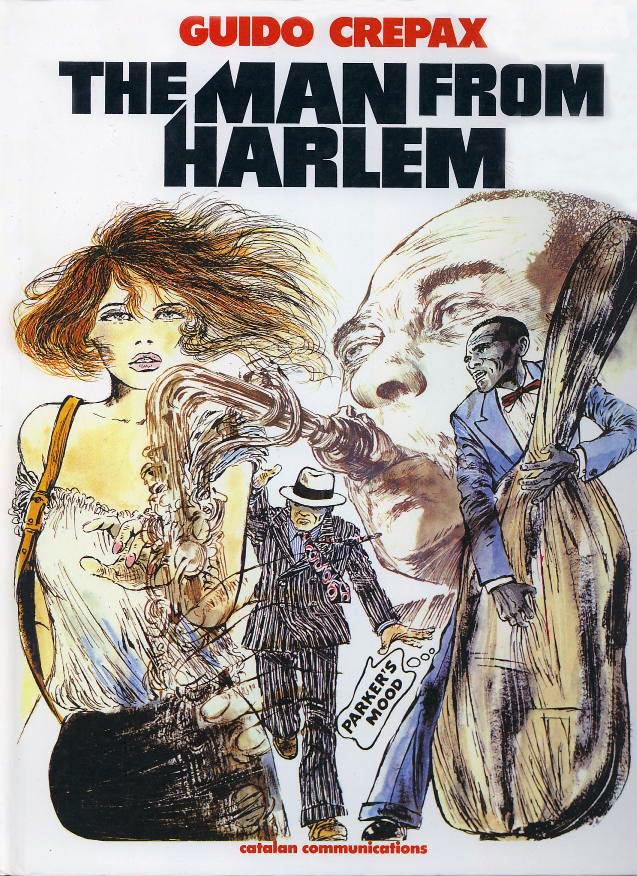 In 1946, in New York City, Johnny Lincoln, a Black bass player becomes the protector of a white woman fleeing from the mob. With racial politics and sexual tensions at a dangerous level, Lincoln uses his music as a way to combat the dangers he faces. This graphic novel is full of compassion, hard truths and has considerable depth. This is a must read.
In 1946, in New York City, Johnny Lincoln, a Black bass player becomes the protector of a white woman fleeing from the mob. With racial politics and sexual tensions at a dangerous level, Lincoln uses his music as a way to combat the dangers he faces. This graphic novel is full of compassion, hard truths and has considerable depth. This is a must read.
2 Live Crew – 1991
Words, L. Campbell, Art By Various Artists
Eros Comix
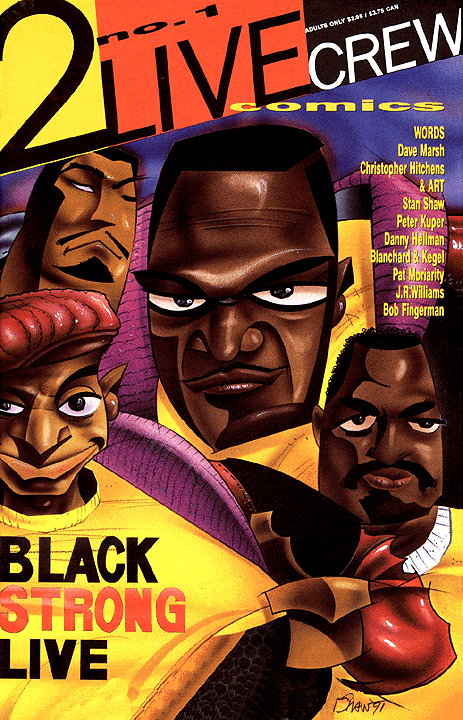 Luther Campbell is no stranger to challenging the status quo. These comic books are well written stories that pull no punches and are heavy on the political sarcasm and adult language.
Luther Campbell is no stranger to challenging the status quo. These comic books are well written stories that pull no punches and are heavy on the political sarcasm and adult language.
Public Enemy/2 Live Crew – 1991
Rock and Roll Comics #19
Writer, T. Lorin, Art S. Immonen And M.Erickson
Rock and Roll Comics
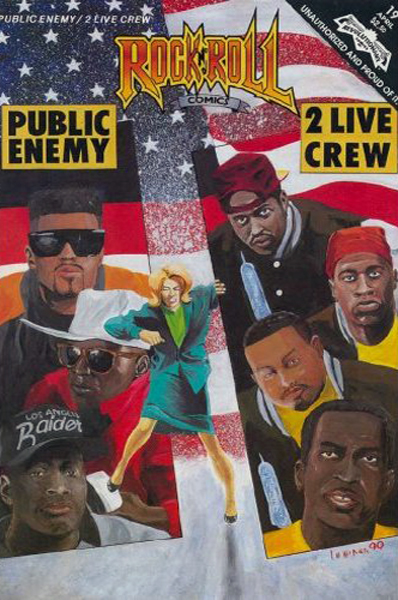 If you’re a fan of 2 Live Crew and Public Enemy then these comic books are a must read for any fan of Rap / Hip Hop.
If you’re a fan of 2 Live Crew and Public Enemy then these comic books are a must read for any fan of Rap / Hip Hop.
Ice T: Crime Rhyme – 1991
Rock and Roll Comics #37
Writer, J.A. Sandford, Art, S. Pentzer
Rock and Roll Comics
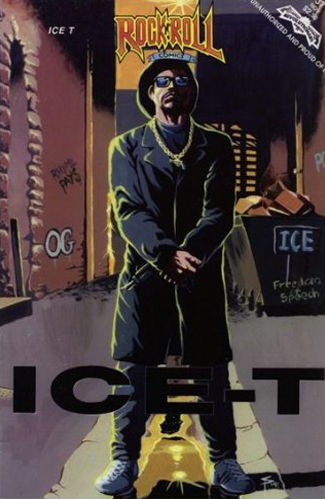 What can we say. This motherfucker is Ice-T. He wanted a comic book about himself and he got one. This book documents his rise as a rap artist and his struggle to present a valid political message. Told in a style that is not preachy and is very readable this will be a winner for Ice-T fans.
What can we say. This motherfucker is Ice-T. He wanted a comic book about himself and he got one. This book documents his rise as a rap artist and his struggle to present a valid political message. Told in a style that is not preachy and is very readable this will be a winner for Ice-T fans.
Billie Holiday – 1993
C. Sompayo, Writer, J. Munoz, Artist
Fatagraghics Books
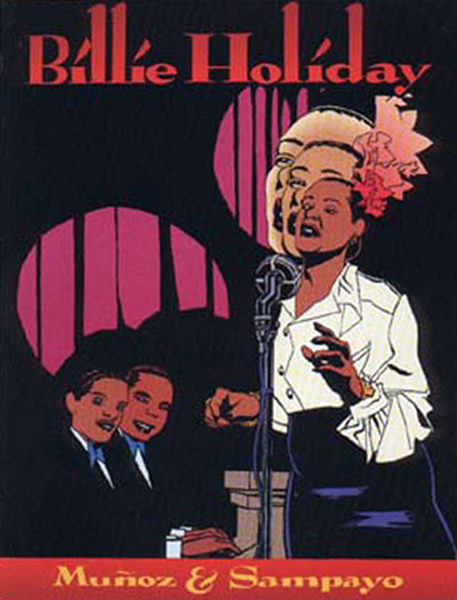 The art of José Muñoz has never been better than in the fifty pages he produced here. While working within the confines of the legend of Billie Holiday, Carlos Sampayo managed with this graphic novel to write a story that is much more than simply another retelling of one of the many myths surrounding one of the greatest musical performers in the history of recorded music. Instead it is a moving and meaningful tale of the high price that was paid to bring to life the music that first defined America in the 20th century: Jazz.
The art of José Muñoz has never been better than in the fifty pages he produced here. While working within the confines of the legend of Billie Holiday, Carlos Sampayo managed with this graphic novel to write a story that is much more than simply another retelling of one of the many myths surrounding one of the greatest musical performers in the history of recorded music. Instead it is a moving and meaningful tale of the high price that was paid to bring to life the music that first defined America in the 20th century: Jazz.
Break the Chain – 1994
KRS-ONE
Written by K. Baker, M. Chess And K. Parker
Marvel Comics
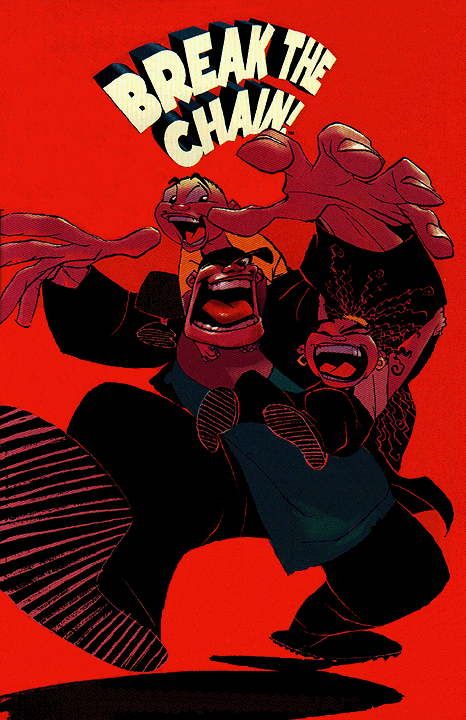 Break the Chain (of ignorance) is a story about a group of urban kids who discover that reading is a great way to find out more about their history. A good effort in combining popular music and comic books as a teaching tool for young people.
Break the Chain (of ignorance) is a story about a group of urban kids who discover that reading is a great way to find out more about their history. A good effort in combining popular music and comic books as a teaching tool for young people.
Louis Armstrong – 2001
Illustrations, P. Paquet
World Almanac Publisher
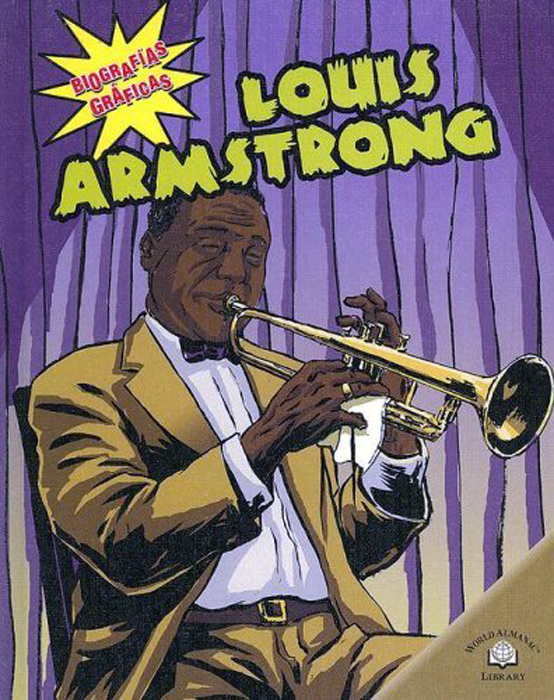 Told in his words from his autobiography “Satchmo”, this is an account of the life of one of the greatest jazz players in American history. Armstrong takes the reader through the world of music and how jazz became his lifelong mistress.
Told in his words from his autobiography “Satchmo”, this is an account of the life of one of the greatest jazz players in American history. Armstrong takes the reader through the world of music and how jazz became his lifelong mistress.
Source: Looking for a Face Like Mine by William H. Foster III

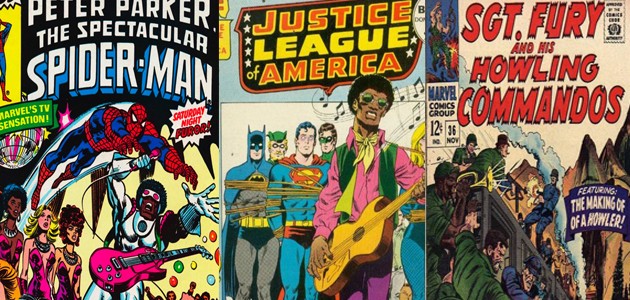
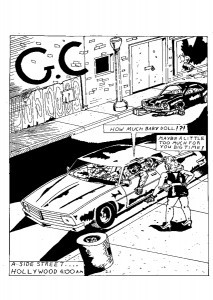

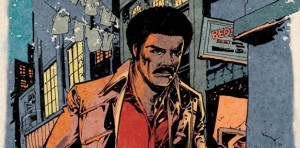

2 Comments
I am very impressed with research placed in displaying a culture that is overlooked, yet admired.
This is a terrific site. But you left out the two comic book characters I remember best from the 1970s:
Falcon: http://www.coverbrowser.com/covers/captain-america/5
and
Luke Cage (Power Man): http://en.wikipedia.org/wiki/Luke_Cage